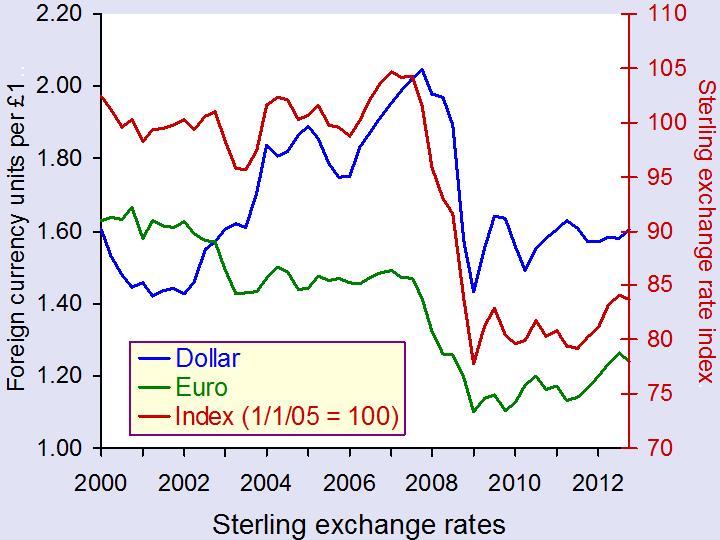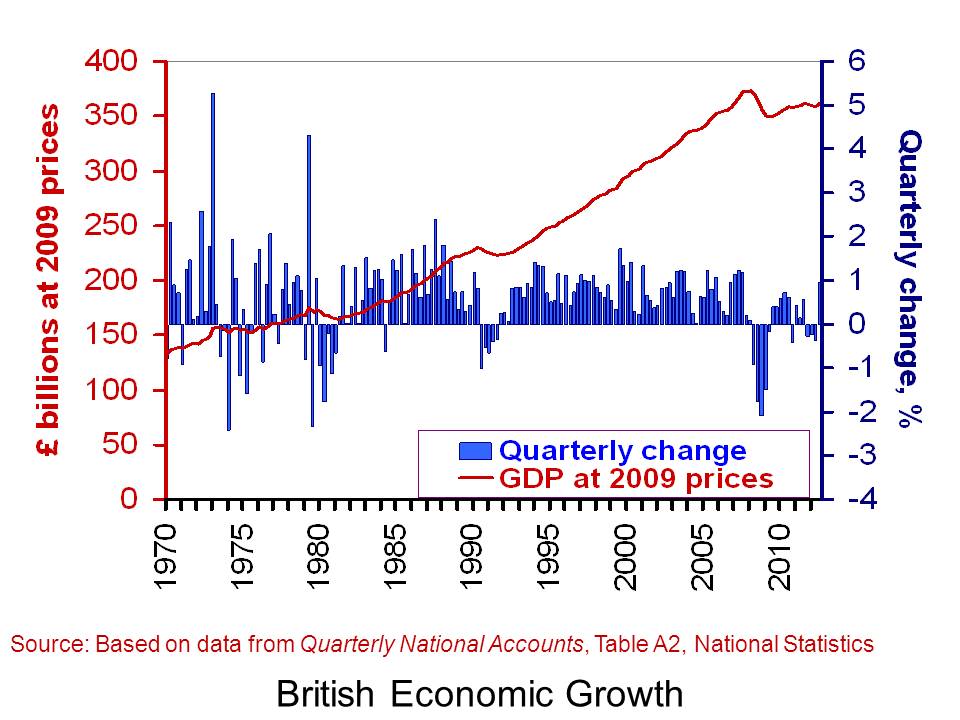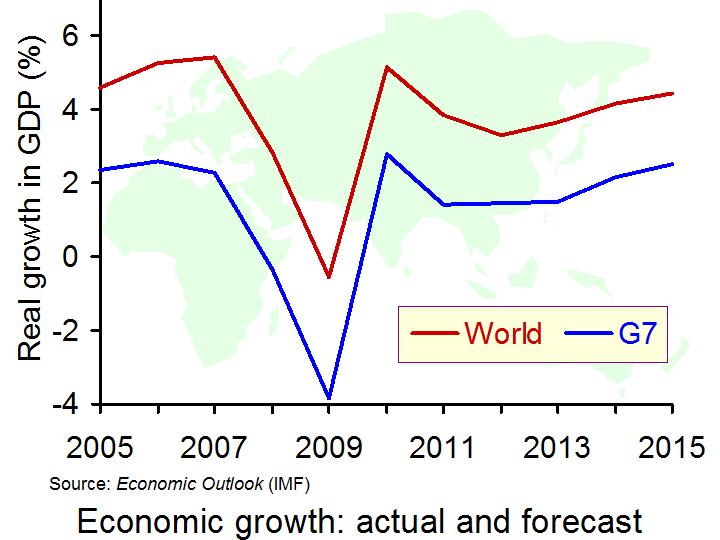 Investment is crucial in all sectors of the economy. With growing demand for travel abroad, airports across the world have begun implementing investment strategies to increase capacity. Airport bosses at Heathrow are currently considering a 5 year investment plan that is expected to cost £3 billion.
Investment is crucial in all sectors of the economy. With growing demand for travel abroad, airports across the world have begun implementing investment strategies to increase capacity. Airport bosses at Heathrow are currently considering a 5 year investment plan that is expected to cost £3 billion.
Although investment is certainly needed and passengers will benefit in the long run, the cost of this investment will have to be met by someone. If these plans are approved by the airport bosses, it is likely that ticket prices will be pushed upwards to pay for it. Any increase in charges will have to receive approval by the Civil Aviation Authority (CAA). The plan at the moment would see ticket prices, via landing charges, increase by £19.33 per passenger before a further rise to £27.30. The impact on customers has already been raised as a key concern.
 If the investment plans proceed, Heathrow expects to see its passenger numbers increase by 2.6m over the next 5 years, despite the proposed price hikes. This would naturally increase revenue and this money would provide at least some of the funds to repay the cost of the investment.
If the investment plans proceed, Heathrow expects to see its passenger numbers increase by 2.6m over the next 5 years, despite the proposed price hikes. This would naturally increase revenue and this money would provide at least some of the funds to repay the cost of the investment.
The price rises have been described as ‘incredibly steep’ and there are concerns that they will penalize customers. Airlines, such as Virgin Atlantic have recognized the need for more investment, but are more focused on finding ways to provide it without the price rises.
 However, Colin Matthews, the Heathrow Chief said:
However, Colin Matthews, the Heathrow Chief said:
Heathrow faces stiff competition from other European hubs and we must continue to improve the service we offer passengers and airlines.
Passengers have already seen prices rise and Heathrow’s cost base has been described by British Airways as ‘inefficient’. Despite the fact that the decision by the CAA is not expected until January 2014, speculation will undoubtedly continue until any decision is reach. The following articles consider this case.
Heathrow hits turbulence over airport charges The Telegraph, Nathalie Thomas (12/2/13)
Heathrow Airport proposes ‘to raise ticket prices’ BBC News (12/2/13)
Heathrow investment to raise ticket prices Sky News (12/2/13)
Cost of Heathrow flights to rise by £27 in five years thanks to investment surcharge plans Mail Online, Helen Lawson (12/2/13)
Airlines fly into a rage as Heathrow warns charges must climb steeply Independent, Simon Calder (12/2/13)
Heathrow investment plan may lead to ticket price rise Reuters (12/2/13)
Heathrow calls for rise in airline tariffs Financial Times, Andrew Parker (12/2/13)
Questions
- If you had to undertake a cost-benefit analysis concerning the above investment proposal, which factors would you consider as the private and external benefits?
- Which factors would have to be taken into account as the private and external costs for any cost-benefit analysis?
- How important is it for the CAA to consider external costs and benefits when making its decision?
- If prices rise as the plans propose, what would you expect to be the effect on passenger numbers? How would this change be shown on a demand and supply diagram?
- According to Heathrow, they are expecting passenger numbers to increase, despite the price rises. What does this suggest about the demand curve? Illustrate your answer.
- Would you expect such an investment to have any macroeconomic impact?
 The exchange rate for sterling is determined in much the same way as the price of goods – by the interaction of demand and supply.
The exchange rate for sterling is determined in much the same way as the price of goods – by the interaction of demand and supply.
When factors change that cause residents abroad to want to hold more or fewer pounds, the demand curve for sterling will shift. If, instead, factors change that cause UK residents to want to buy more or less foreign currency, then the supply curve of sterling will shift. It is these two curves that determine the equilibrium exchange rate of sterling.
There are concerns at the moment that sterling is about to reach a peak, with expectations that the pound will weaken throughout 2013. But is a weakening exchange rate good or bad for the UK?
 With lower exchange rates, exports become relatively more competitive. This should lead to an increase in the demand for UK products from abroad. As exports are a component of aggregate demand, any increase in exports will lead to the AD curve shifting to the right and thus help to stimulate a growth in national output. Indeed, throughout the financial crisis, the value of the pound did fall (see chart above: click here for a PowerPoint) and this led to the total value of UK exports increasing significantly. However, the volume of UK exports actually fell. This suggests that whilst UK exporters gained in terms of profitability, they have not seen much of an increase in their overall sales and hence their market share.
With lower exchange rates, exports become relatively more competitive. This should lead to an increase in the demand for UK products from abroad. As exports are a component of aggregate demand, any increase in exports will lead to the AD curve shifting to the right and thus help to stimulate a growth in national output. Indeed, throughout the financial crisis, the value of the pound did fall (see chart above: click here for a PowerPoint) and this led to the total value of UK exports increasing significantly. However, the volume of UK exports actually fell. This suggests that whilst UK exporters gained in terms of profitability, they have not seen much of an increase in their overall sales and hence their market share.
Therefore, while UK exporters may gain from a low exchange rate, what does it mean for UK consumers? If a low exchange rate cuts the prices of UK goods abroad, it will do the opposite for the prices of imported goods in the UK. Many goods that UK consumers buy are from abroad and, with a weak pound, foreign prices become relatively higher. This means that the living standards of UK consumers will be adversely affected by a weak pound, as any imported goods buy will now cost more.
It’s not just the UK that is facing questions over its exchange rate. Jean-Claude Junker described the euro as being ‘dangerously high’ and suggested that the strength or over-valuation of the exchange rate was holding the eurozone back from economic recovery. So far the ECB hasn’t done anything to steer its currency, despite many other countries, including Japan and Norway having already taken action to bring their currencies down. Mario Draghi, the ECB’s president, however, said that ‘both the real and the effective exchange rate of the euro are at their long-term average’ and thus the current value of the euro is not a major cause for concern.
So, whatever your view about intervening in the market to steer your currency, there will be winners and losers. Now that countries are so interdependent, any changes in the exchange rate will have huge implications for countries across the world. Perhaps this is why forecasting currency fluctuations can be so challenging. The following articles consider changes in the exchange rate and the impact this might have.
A pounding for sterling in 2013? BBC News, Stephanomics, Stephanie Flanders (17/1/13)
UK drawn into global currency wars as slump deepens Telegraph, Ambrose Evans-Pritchard (16/1/13)
Foreign currency exchange rate predictions for GBP EUR, Forecasts for USD and NZD Currency News, Tim Boyer (15/1/13)
Euro still looking for inspiration, Yen firm Reuters (16/1/13)
Daily summary on USD, EUR, JPY, GBP, AUD, CAD and NZD International Business Times, Roger Baettig (16/1/13)
UK inflation bonds surge on Index as pound falls versus euro Bloomberg, Business News, Lucy Meakin (10/1/13)
Questions
- Which factors will cause an increase in the demand for sterling? Which factors will cause a fall in the supply of sterling?
- In the article by Stephanie Flanders from the BBC, loose monetary policy is mentioned as something which is likely to continue. What does this mean and how will this affect the exchange rate?
- Explain the interest- and exchange-rate transmission mechanisms, using diagrams to help your answer.
- If sterling continues to weaken, how might this affect economic growth in the UK? Will there be any multiplier effect?
- What is the difference between the volume and value of exports? How does this relate to profit margins?
- Why are there suggestions that the euro is over-valued? Should European Finance Ministers be concerned?
- Should governments or central banks intervene in foreign exchange markets?
- If all countries seek to weaken their currencies in order to make their exports more competitive, why is this a zero-sum game?
 We know two things about economic growth in a developed economy like the UK: it is positive over the longer term, but highly volatile in the short term. We can refer to these two facts as the twin characteristics of growth. The volatility of growth sees occasional recessions, i.e. two or more consecutive quarters of declining output. Since 1973, the UK has experienced six recessions.
We know two things about economic growth in a developed economy like the UK: it is positive over the longer term, but highly volatile in the short term. We can refer to these two facts as the twin characteristics of growth. The volatility of growth sees occasional recessions, i.e. two or more consecutive quarters of declining output. Since 1973, the UK has experienced six recessions.
Here we consider in a little more detail the growth numbers for the UK from the latest Quarterly National Accounts, focusing on the depth and duration of these six recessions. How do they compare?
The latest figures on British economic growth show that the UK economy grew by 0.9 per cent in the third quarter of 2012. However, when compared with the third quarter of 2011, output was essentially unchanged. This means that the annual rate of growth was zero. Perhaps even more telling is that output (real GDP) in Q3 2012 was still 3.0 per cent below its Q1 2008 level.
 The chart helps to put the recent output numbers into an historical context. It shows both the quarter-to-quarter changes in real GDP (right-hand axis) and the level of output as measured by GDP at constant 2009 prices (left-hand axis). It captures nicely the twin characteristics of growth. Since 1970, the average rate of growth each quarter has been 0.6 per cent. This is equivalent to an average rate of growth of 2.35 per cent per year. The chart also allows us to pin-point periods of recessions.
The chart helps to put the recent output numbers into an historical context. It shows both the quarter-to-quarter changes in real GDP (right-hand axis) and the level of output as measured by GDP at constant 2009 prices (left-hand axis). It captures nicely the twin characteristics of growth. Since 1970, the average rate of growth each quarter has been 0.6 per cent. This is equivalent to an average rate of growth of 2.35 per cent per year. The chart also allows us to pin-point periods of recessions.
One way of comparing recessions is to compare their ‘2 Ds’: depth and duration. The table shows the number of quarters each of the six recessions since 1973 lasted. It also shows how much smaller the economy was by the end of each recession. In other words, it shows the depth of each recession as measured by the percentage reduction in output (real GDP).
British recessions
|
Duration (quarters) |
Depth (output lost, %) |
| 1973Q3–74Q1 |
3 |
3.25 |
| 1975Q2–75Q3 |
2 |
1.76 |
| 1980Q1–81Q1 |
5 |
4.63 |
| 1990Q3–91Q3 |
5 |
2.93 |
| 2008Q2–09Q2 |
5 |
6.28 |
| 2011Q4–12Q2 |
3 |
0.90 |
 Investment is crucial in all sectors of the economy. With growing demand for travel abroad, airports across the world have begun implementing investment strategies to increase capacity. Airport bosses at Heathrow are currently considering a 5 year investment plan that is expected to cost £3 billion.
Investment is crucial in all sectors of the economy. With growing demand for travel abroad, airports across the world have begun implementing investment strategies to increase capacity. Airport bosses at Heathrow are currently considering a 5 year investment plan that is expected to cost £3 billion. If the investment plans proceed, Heathrow expects to see its passenger numbers increase by 2.6m over the next 5 years, despite the proposed price hikes. This would naturally increase revenue and this money would provide at least some of the funds to repay the cost of the investment.
If the investment plans proceed, Heathrow expects to see its passenger numbers increase by 2.6m over the next 5 years, despite the proposed price hikes. This would naturally increase revenue and this money would provide at least some of the funds to repay the cost of the investment. However, Colin Matthews, the Heathrow Chief said:
However, Colin Matthews, the Heathrow Chief said:





